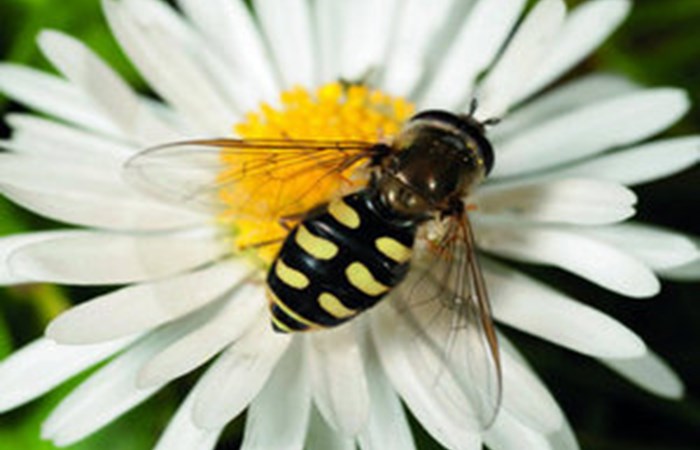Department for Environment, Food and Rural Affairs

Over the next five years the new Countryside Stewardship scheme will offer grants to help improve our environment and countryside with 85 million set aside to support projects in 2016, including those that improve pollen and nectar sources.
Bees and pollinators are one of four main priorities for the scheme, which is being run on a competitive basis for the first time this year.
Applications will be ranked and money only awarded to those who will make the biggest improvements in their local area. Extra points will be given to agreements working to support bees and pollinators and other farm wildlife.
Work could include year-round food, shelter and nesting places that wild pollinators, birds and other farm wildlife need to survive and thrive; sowing nectar flower and winter bird food mixes; or increasing flower resources on grassland and on field margins and managing hedgerows.
Environment Secretary Elizabeth Truss said:
This is the first ever countryside stewardship scheme that specifically combines help for bees and pollinators as well as wildlife, woodland and rivers.
This will mean more margins and meadows with colourful wildflowers in our countryside. Productive farming goes hand in hand with improving the environment.
Evidence suggests there can be meaningful benefits for farm wildlife if the right combination of environmentally-friendly farming practices are adopted on just 3 per cent or more of land.
Countryside Stewardship grants will help pay for thousands of individual agreements across the country with a special focus on four priorities:
- Wildlife and nature: restoring habitats, providing food and nesting places for birds, insects and other animals, creating areas for rare flowering plants and managing hedges
- Pollinators: providing pollen and nectar sources and nesting places and ensuring the right resources for wild pollinators where they are most needed
- Woodland: funding the creation of new woodland and supporting the management of existing woodlands
- Water/flooding: making water cleaner and reducing risk of flooding by encouraging changes to farming practice (such as crop management), improving farm infrastructure and establishing woodland
Building on the existing agri-environment or woodland grant schemes, it will offer a new competitive approach, ensuring that funding goes to those schemes that will make the biggest possible difference to the local environment.
Local priorities have been established across the country, meaning that this funding will be directly targeted to actions that will bring the biggest environmental benefit for those areas.
Case study
Pollinators such as bees, hoverflies, moths and butterflies play a key role in securing the UK food industry, with as much as one third of the food we eat pollinated by bees.
Hope Farm in Knapwell, Cambridgeshire, is a great example of the incredible success that can be achieved when farmers adopt these wildlife-friendly practices.
Taken over by the RSPB in 2000, the farm has developed and trialled farming techniques to benefit farmland birds. By adopting these wildlife-friendly practices, the farm has had huge success - doubling farmland bird numbers and quadrupling skylark numbers in the last 15 years.
More information
-
This scheme is just one part within the wider Rural Development Programme, set to benefit many different aspects of rural life. Not only improving the environment, RDPE will also help make UK food and farming the best in the work, protect against animal and plant disease, create jobs and grow the rural economy.
-
Investing at least 3.5 billion into our rural economies by 2020, the Programme will continue to be rolled out throughout the next year.
-
Countryside Stewardship is a competitive and targeted scheme. To make sure that the funding available is targeted where it can bring the biggest benefit, applications will be scored against a range of local priorities. Applicants who address these priorities are more likely to receive funding.
-
Countryside Stewardship has three main elements:
Mid Tier
Multi-year agreements to address widespread environmental issues, such as reducing diffuse water pollution or improving the farmed environment for farmland birds and wild pollinators.
Higher Tier
Multi-year agreements and certain standalone capital items for the most environmentally important sites, including commons and woodlands. These will usually be in places that need complex management, such as habitat restoration and woodland improvement.
Capital Grants
These will typically be for one or two year programmes of work. They may be submitted with multi-year applications or on their own.
- More details on the Countryside Stewardship can be found here: https://www.gov.uk/countrysidestewardship
Photo Credit: Alan Drewitt (Natural England)
